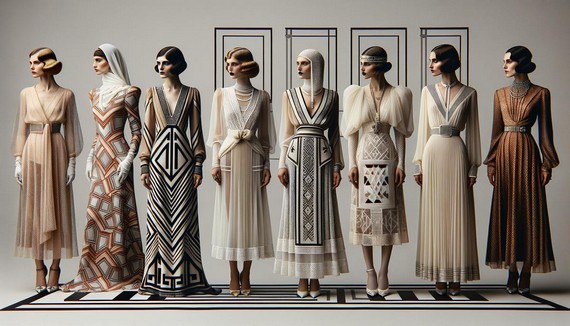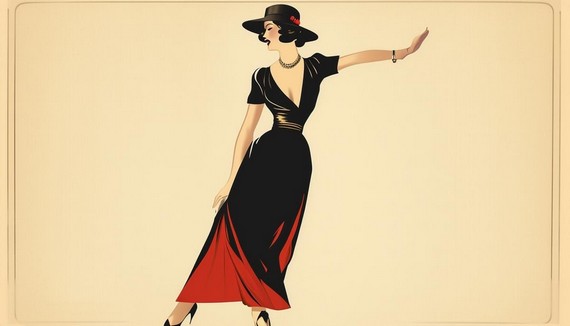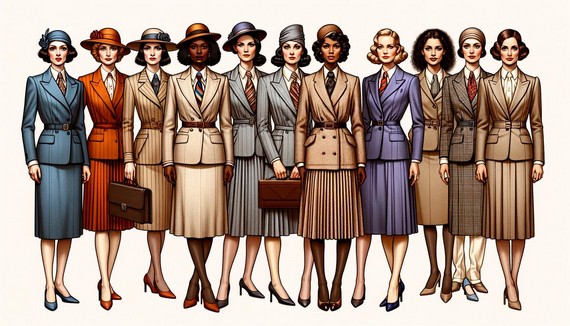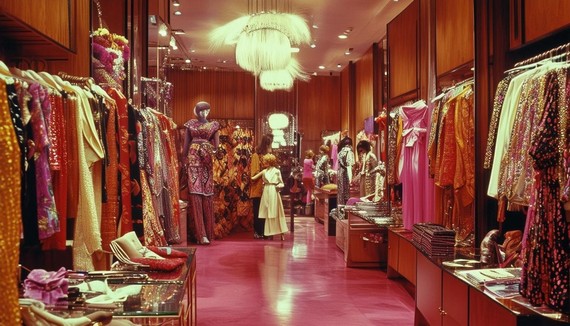1930s Social Changes
Fashion magazines have long served as both a reflection and catalyst of societal shifts, particularly during transformative periods. In the 1930s, these publications were instrumental in redefining 1930s Social Changes and women’s roles through style and self-expression. As the world moved through significant changes, fashion became a powerful tool for articulating new identities and aspirations.

1930s fashion magazine spread
Fashion Magazines and Modernity
Fashion magazines in the 1930s were more than just glossy publications; they were guides to modern living. Upmarket magazines like Vogue used photography and avant-garde art to capture the flowing lines of the female form, educating women on elegance and style.
Vogue’s 1935 issues showcased the geometry of body lines through clothes and photography, blending exercise and corsetry. Fashion columns catered to various tastes, from bold statements to subtle nods to modernity.
Women’s magazines acted as style tutors, offering beauty tips and introducing readers to new trends. They promoted novelty – new styles, shorter hemlines, and fresh haircuts – teaching readers how to be ‘modern’.
Some publications took a different approach. Feminist magazines often criticized mainstream fashion coverage, questioning how trends influenced female consumption patterns. Women’s Leader, for example, debated running its own dress feature to both acknowledge and challenge prevailing norms.
Magazines like Eve created characters to personify modern consumer society, giving readers relatable symbols to follow. Time and Tide used a playful format, featuring a faux ‘men’s page’ to poke fun at stereotypical women’s pages while still capitalizing on fashion advertising revenue.
For those seeking glamour, Girls’ Cinema delivered fashion as an exciting, aspirational experience, allowing readers to model their look after stylish film stars. By combining visual art with fashion, these magazines shaped a new sense of womanhood, offering women the chance to engage with and sometimes critique social norms.

A stylish 1935 Vogue magazine cover showcasing a woman in elegant, modern 1930s fashion
1930s Social Changes Reflected in Fashion
The 1930s brought significant social changes, with fashion serving as both a mirror and a voice for these shifts. As women’s roles evolved, so did their clothing and self-expression. Skirts became shorter, haircuts bolder, and styles more androgynous, reflecting a growing desire for independence and empowerment.
With more women entering the workforce, practical yet fashionable attire became essential. Dresses and suits borrowed elements from menswear, signifying strength and capability. This fashion renaissance allowed women to project their evolving identities as pillars of society, workers, and fashion enthusiasts.
Cosmetics also played a role in this transformation, with bold lips and smoky eyes becoming popular. This new approach to beauty aligned with women’s desire to be seen and heard in a changing world.
The rise of consumer culture fueled this sartorial evolution, with magazines curating wardrobes and lifestyles that were both aspirational and attainable. Through fashion, women found a new language to articulate their shifting roles and aspirations.
As 1930s social change trends became more accessible across social classes, fashion became a universal dialogue. This period shaped how women perceived fashion and revolutionized their roles in society, providing them with the tools to carve out new identities.

A group of diverse women in 1930s workplace attire, showcasing practical yet fashionable styles with menswear-inspired elements
1930s social changes – Feminism and Fashion
The 1930s saw a complex relationship between feminism and fashion. Feminist publications like Time and Tide criticized fashion’s influence on women’s lives while still featuring advertisements from department stores, recognizing fashion’s undeniable appeal and financial importance.
Feminist magazines were skeptical of the commercialized fashion world, seeing it as promoting unattainable ideals of beauty and consumption. They often linked these critiques to broader discussions about capitalism and its impact on women.
However, these publications also acknowledged fashion’s potential for self-expression and identity formation. They recognized that fashion could disrupt and redefine gender norms, supporting women’s emancipation.
Women adopted styles that borrowed from menswear, such as jackets and trousers, creating a more androgynous look that was both modern and subversive. This shift reflected women taking control of their sartorial choices and challenging traditional roles.
The feminist critique of fashion contributed to a wider cultural discussion on female autonomy. It raised questions about whether clothing choices were a path to liberation or another form of societal constraint.
Magazines like Time and Tide maintained a playful approach to fashion, using humor to subvert gender conventions while still engaging with fashion’s allure. This balanced approach allowed for broader conversations about women’s roles in society.
Ultimately, the relationship between fashion and feminism in the 1930s was dynamic, involving opposition, adaptation, and reinvention. It empowered female readers to question, embrace, and redefine fashion as both a personal choice and a reflection of broader societal changes.
1930s social change – Biba and Radical Social Changes
In the 1970s, Biba emerged as a symbol of rebellion in fashion, challenging traditional norms. Co-founder Barbara Hulanicki created boutiques that welcomed society’s outsiders, offering a space where fashion could be a form of self-expression and reinvention.
The 1970s saw significant social upheaval, including advances in feminism, gay liberation, and civil rights. Biba’s inclusive ethos aligned well with these movements, celebrating diversity and self-expression without conforming to typical consumer ideals.
Biba’s embrace of androgyny resonated with the gay liberation movement. The boutique’s flamboyant displays and gender-neutral approach to clothing appealed to those challenging traditional gender roles. They even offered makeup for men, aligning with the glam rock trends of the era.
In support of civil rights, Biba launched a makeup range for black skin, recognizing the diversity of their clientele. This move was both a business decision and a statement about representation in the fashion industry.
Biba evolved with its customers, growing from the playful mini-skirt styles of the ’60s to a more sophisticated offering. Big Biba, its later iteration, expanded beyond fashion to include homeware and children’s wear, embodying a complete lifestyle.
- Biba made fashion accessible to all, combining affordability with avant-garde style.
- Through Biba, fashion became a means of expressing change and individuality.
- Its legacy lies not just in its designs, but in its role as a catalyst for social change, promoting inclusivity and self-expression through fashion.

The interior of a Biba boutique in the 1970s, showcasing flamboyant displays and diverse clientele
Ultimately, 1930s social changes in fashion was more than a superficial trend; it was a profound expression of societal transformation. Through the pages of magazines, women found a voice and a means to challenge traditional norms, paving the way for future generations to embrace fashion as a form of empowerment and change.
References:
- Hulanicki B. From A to Biba: The Autobiography of Barbara Hulanicki. London: V&A Publishing; 2007.
- Beetham M. A Magazine of Her Own?: Domesticity and Desire in the Woman’s Magazine, 1800-1914. London: Routledge; 1996.
- White C. Women’s Magazines 1693-1968. London: Michael Joseph; 1970.


